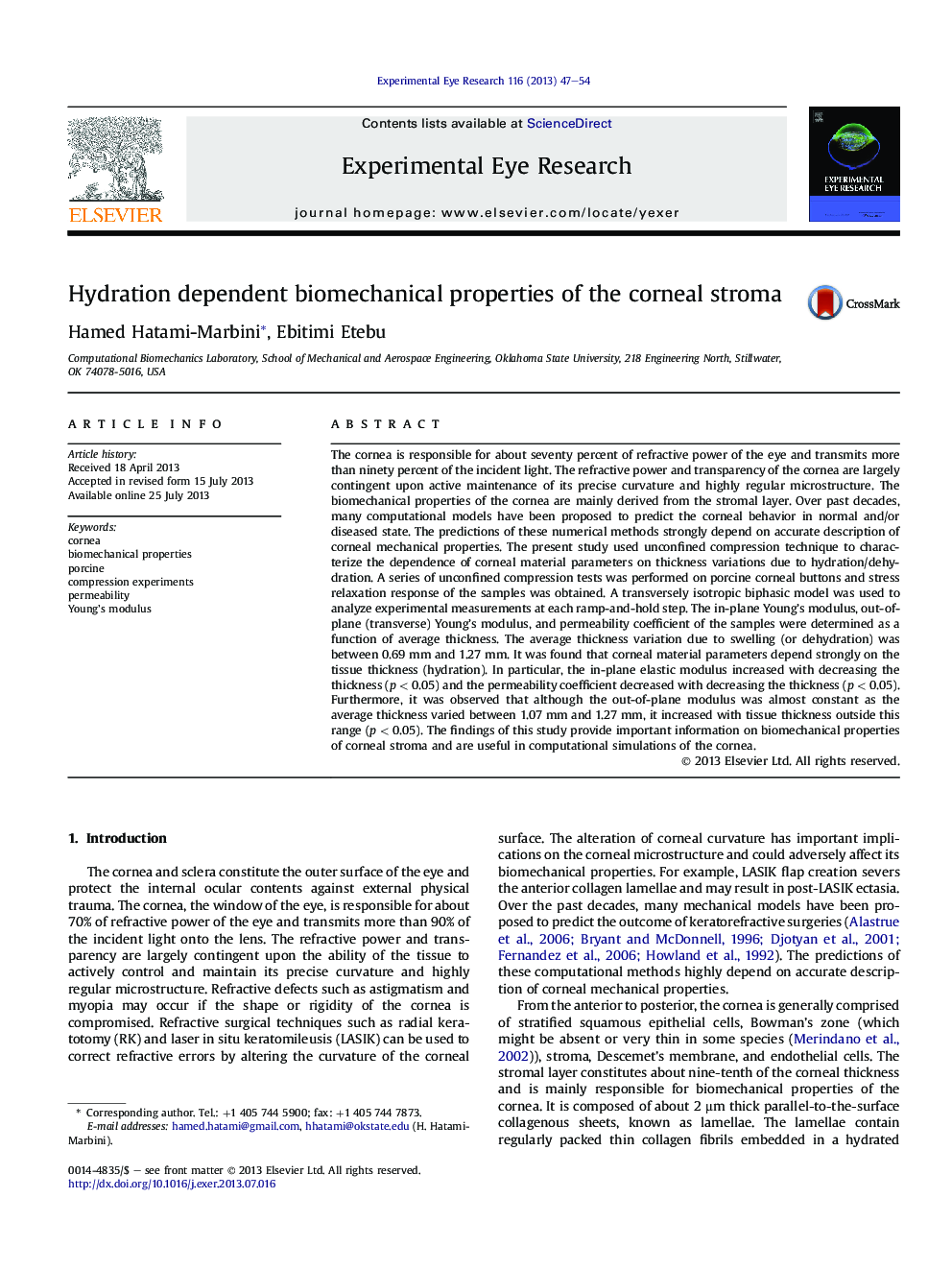| کد مقاله | کد نشریه | سال انتشار | مقاله انگلیسی | نسخه تمام متن |
|---|---|---|---|---|
| 6197191 | 1602606 | 2013 | 8 صفحه PDF | دانلود رایگان |
- Characterizing thickness (hydration) dependent mechanical properties of cornea.
- Measuring stress-relaxation behavior of corneal stroma under compression.
- Determining corneal permeability and in-plane and out-of-plane moduli.
- New experimental method for characterizing corneal material parameters.
The cornea is responsible for about seventy percent of refractive power of the eye and transmits more than ninety percent of the incident light. The refractive power and transparency of the cornea are largely contingent upon active maintenance of its precise curvature and highly regular microstructure. The biomechanical properties of the cornea are mainly derived from the stromal layer. Over past decades, many computational models have been proposed to predict the corneal behavior in normal and/or diseased state. The predictions of these numerical methods strongly depend on accurate description of corneal mechanical properties. The present study used unconfined compression technique to characterize the dependence of corneal material parameters on thickness variations due to hydration/dehydration. A series of unconfined compression tests was performed on porcine corneal buttons and stress relaxation response of the samples was obtained. A transversely isotropic biphasic model was used to analyze experimental measurements at each ramp-and-hold step. The in-plane Young's modulus, out-of-plane (transverse) Young's modulus, and permeability coefficient of the samples were determined as a function of average thickness. The average thickness variation due to swelling (or dehydration) was between 0.69 mm and 1.27 mm. It was found that corneal material parameters depend strongly on the tissue thickness (hydration). In particular, the in-plane elastic modulus increased with decreasing the thickness (p < 0.05) and the permeability coefficient decreased with decreasing the thickness (p < 0.05). Furthermore, it was observed that although the out-of-plane modulus was almost constant as the average thickness varied between 1.07 mm and 1.27 mm, it increased with tissue thickness outside this range (p < 0.05). The findings of this study provide important information on biomechanical properties of corneal stroma and are useful in computational simulations of the cornea.
Journal: Experimental Eye Research - Volume 116, November 2013, Pages 47-54
